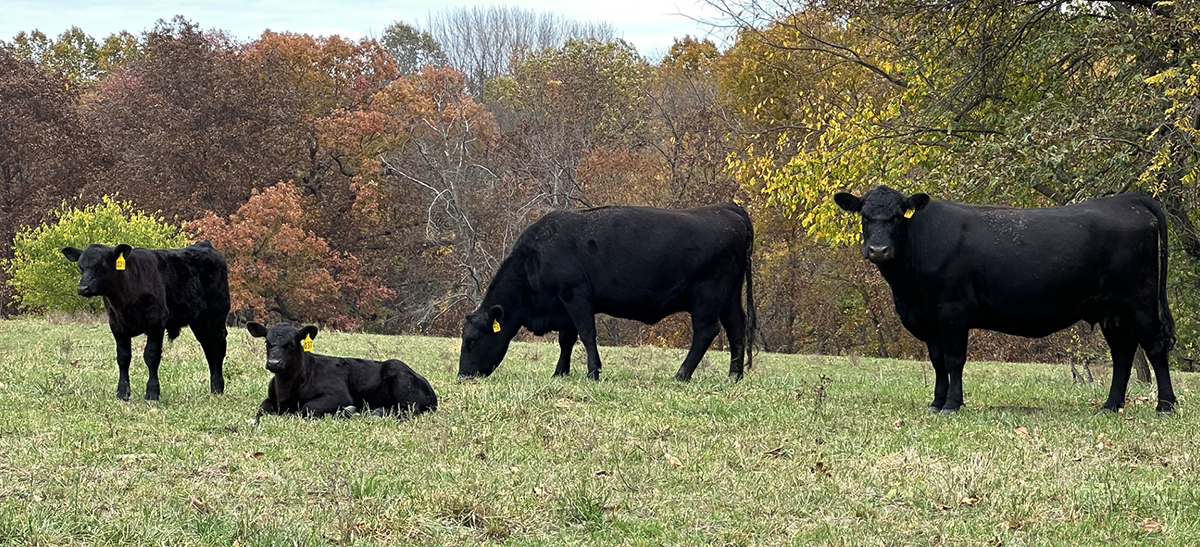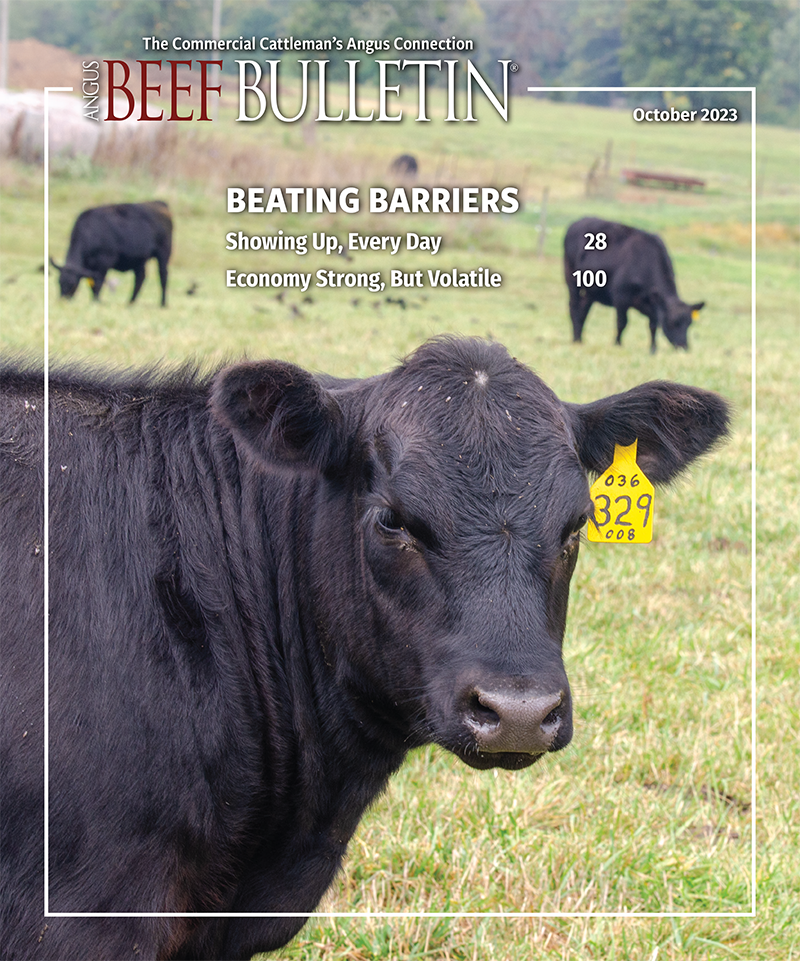
Angus Releases Cow Longevity Prediction
Now available in a research EPD format, functional longevity (FL) evaluates how long Angus cows will stay in the herd and how many calves they will produce.
The Functional Longevity (FL) research expected progeny difference (EPD) was released by the American Angus Association Oct. 25. The trait’s purpose is to help further characterize relevant maternal traits, which aim to increase the long-term success of breeders and profitability of cow-calf herds.
The Angus Genetics Inc. (AGI) research team, which conducts the breed’s development of EPDs, leveraged the data set from Angus Herd Improvement Records (AHIR®) Inventory Reporting as a base for FL.
“I want to applaud the membership, because those data submissions on those traits that we needed have really ramped up,” says Smitty Lamb, member of the American Angus Association Board of Directors and AGI Board chairman. “You’ve allowed us to provide this tool.”
At its most basic, functional longevity looks at how long a sire’s daughters will stay in the herd and how many calves they will produce during their lifetime. The unit of the trait is number of calves produced by 6 years of age, with a numerically higher EPD meaning, on average, the sires’ daughters are predicted to produce more calves by 6 years of age compared to a lower EPD.
 |
Kelli Retallick-Riley, president of AGI, says she and her team are eager to observe how well the FL research EPD aligns with expectations.
“We know members have been out there breeding cattle for generations upon generations, so their feedback will be important to hear as we continue to make this tool the best it can be,” she says.
Brady Larson of Larson Angus Ranch, Sharon Springs, Kan., says he has been looking forward to analyzing the initial research EPD results. He is enrolled in Inventory Reporting and his herd gained MaternalPlus® recognition. For his efforts, he and others enrolled in Inventory Reporting have first access to the FL research EPD being applied to their herds.
“We can learn from it and have better selection criteria in the future,” he says. “I’m glad that a lot of these maternal issues are getting looked at, and I’m more than happy to keep turning in as much data as I can through MaternalPlus to help.”
A research EPD is a prelude to a production EPD. A research EPD does not get updated weekly, but can be updated periodically as more data flows into the database. Once more data are collected, the evaluation will become even more robust, and the research EPD can be moved to production.
Andre Garcia, a geneticist with AGI, says one difficulty with the FL EPD model was accommodating and using as much breeder-collected data as possible without sacrificing EPD accuracy. The low heritability of the trait also presents modeling challenges.
“Some people may ask, ‘Heritability is low, so what’s the point?’ But there is a point,” Garcia says. “You’re not going to make genetic progress as fast. However, as soon as you start, the more progress you can accumulate over time.”
He encourages producers who aren’t participating in Inventory Reporting already to submit their data. This helps ensure accurate EPDs across the board and contributes to the fine-tuning of FL in its initial research state and the production stage in the future. Garcia says genetic correlations between functional longevity and other traits are of interest and will be explored in future research, especially as more and more data are collected.
Larson admits it is a challenge to account for each animal and collect every recommended data point. Regardless, he will continue to submit data and utilize EPD tools as they are developed, because he says he wants to be part of the solution for opportunities he sees.
“On the cow side of it, there’s so much more that goes into it that needs studied and applied,” Larson says. “I want to make the best cow that I can that will last a long time.”
As a research EPD, FL will not be incorporated into the maternal weaned calf value ($M). Current research is ongoing to learn more about how the EPD could potentially play in $M when FL moves to a production stage in the future.
The research report for the FL research EPD is available at https://bit.ly/FL-rsrch-rprt. For more information, you can register to join an Angus University Webinar to be broadcast Dec. 5 at https://bit.ly/AngusU1223. A live question-and-answer session will follow a short presentation on the FL research EPD.
Editor’s note: Sarah Kocher is a communications specialist with the American Angus Association. [Lead photo by Shauna Hermel.]



